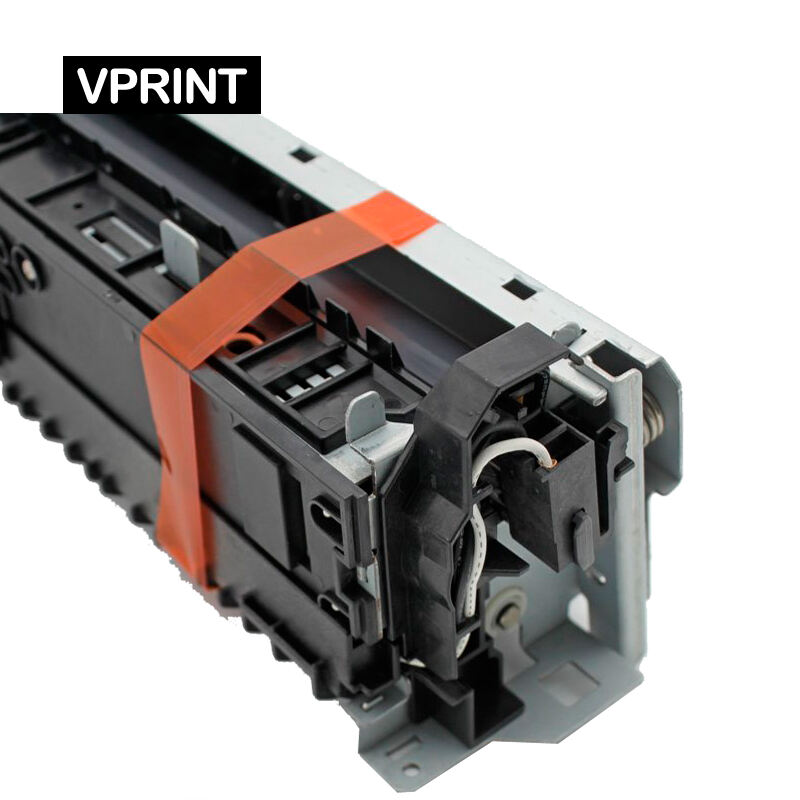Essential Maintenance Tips for HP Printer Fusers
The fuser assembly is a critical component in your HP printer, responsible for permanently bonding toner to paper through heat and pressure. Understanding proper HP fuser maintenance can significantly extend its lifespan, improve print quality, and save considerable replacement costs over time. Let's explore comprehensive strategies to maximize your fuser's durability while maintaining optimal performance.
Understanding Your HP Fuser Components
Key Fuser Elements and Their Functions
The HP fuser assembly consists of several crucial components working in harmony. The primary elements include the heating element, pressure roller, and thermistor. The heating element maintains the precise temperature needed for toner adhesion, while the pressure roller ensures consistent contact between paper and heated components. The thermistor monitors temperature to prevent overheating and maintain print quality.
Common Signs of Fuser Wear
Recognizing early warning signs of fuser deterioration enables proactive maintenance. Watch for symptoms like wrinkled pages, toner smearing, or paper jams. Strange noises during printing or inconsistent print quality across the page often indicate developing fuser issues. Regular inspection of these indicators helps prevent unexpected failures and extends the component's lifespan.
Preventive Maintenance Strategies
Regular Cleaning Protocols
Implementing a systematic cleaning schedule is fundamental for HP fuser maintenance. Use approved cleaning sheets monthly to remove accumulated toner and paper dust. When cleaning, ensure the printer has completely cooled down to prevent damage to sensitive components. Avoid using harsh chemicals or abrasive materials that could compromise the fuser's surface.
Environmental Controls
The environment significantly impacts fuser longevity. Maintain optimal temperature and humidity levels in your printer area. Excessive moisture can lead to paper expansion and irregular feeding, while extremely dry conditions may cause static electricity buildup. Consider using a dehumidifier or humidifier to maintain ideal conditions between 45-55% relative humidity.
Operational Best Practices
Paper Selection and Handling
Using appropriate paper types and weights is crucial for HP fuser maintenance. Always select paper that meets HP specifications for your printer model. Store paper in a controlled environment and fan sheets before loading to prevent multiple-sheet feeds. Proper paper handling reduces unnecessary stress on the fuser assembly during the printing process.
Print Volume Management
Strategic management of print volumes helps extend fuser life. Distribute large print jobs across multiple sessions to prevent overheating. Schedule regular breaks during heavy printing periods to allow the fuser to cool naturally. Consider implementing print quotas or routing high-volume jobs to dedicated high-capacity printers.
Professional Maintenance Procedures
Scheduled Service Intervals
Establish regular maintenance schedules based on your printer's usage patterns. Professional servicing should occur at manufacturer-recommended intervals or when print volume thresholds are reached. During these services, technicians can inspect, clean, and adjust fuser components to ensure optimal performance.

Component Replacement Guidelines
Know when to replace wear items before they cause fuser damage. Keep track of page counts and monitor print quality closely. Replace pressure rollers and cleaning pads according to manufacturer specifications. Timely replacement of these supporting components helps maintain proper fuser operation and extends its overall lifespan.
Troubleshooting and Recovery
Diagnostic Procedures
When issues arise, follow systematic troubleshooting procedures. Start with basic diagnostics like checking error codes and performing test prints. Document any unusual behavior or print quality issues. This information helps identify patterns and potential underlying problems affecting the fuser assembly.
Emergency Response Protocols
Develop clear procedures for handling fuser-related emergencies. Train operators on proper shutdown procedures if they notice unusual noises or smell burning. Having a backup plan, such as an alternative printer or maintenance contract, ensures business continuity during unexpected fuser issues.
Frequently Asked Questions
How often should I perform HP fuser maintenance?
Regular maintenance should be performed monthly for moderate-use printers, with professional servicing recommended every 200,000 pages or annually, whichever comes first. High-volume environments may require more frequent maintenance intervals.
What temperature should my printer room maintain for optimal fuser performance?
Maintain room temperature between 68-75°F (20-24°C) for optimal fuser operation. Avoid placing printers near windows, air conditioning vents, or heat sources that could affect temperature stability.
Can I clean the fuser assembly myself?
While basic cleaning using manufacturer-approved cleaning sheets is safe for users, internal fuser cleaning should only be performed by qualified technicians. Attempting to disassemble or deep clean the fuser assembly yourself could result in damage or injury.

